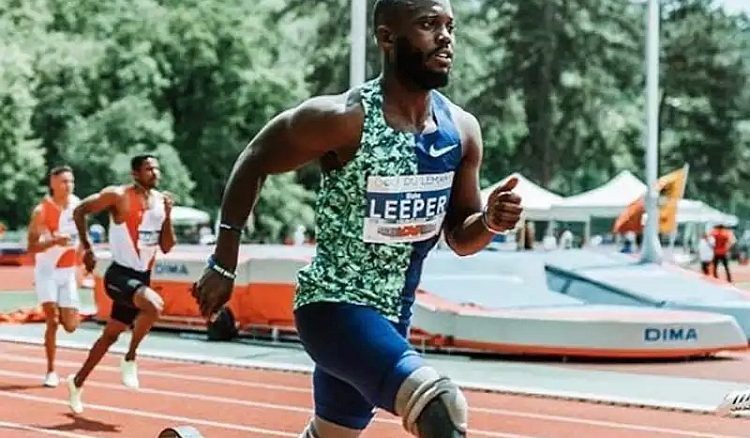
● From our sister site, TheSportsExaminer.com ●
The 109-page decision by the Court of Arbitration for Sport in the Blake Leeper vs. World Athletics was posted by the Court and contains a number of interesting elements beyond the specific holding in the case.
Perhaps the most important holding was stated at the top by the Court:
“[T]his appeal is not about the broader question of whether or not disabled athletes should be permitted to compete against able-bodied athletes in elite level international athletics competitions, and if so on what terms.”
The case did decide whether Leeper would be eligible to compete in open (World Athletics) competitions – including the Olympic Games – with the set of prostheses he currently uses.
The decision made two holdings: first, that the burden of proof is on World Athletics – not the athlete – to show that the prostheses being used create an advantage for the athlete vis-a-vis an athlete not using the prostheses, and second, that the prostheses used by Leeper give him an advantage and cannot be used in World Athletics competitions.
The movement of the burden of proof from the athletes to World Athletics creates a new standard for such cases moving forward and is highly significant. The holding on the prostheses applies to Leeper only.
In reviewing the conflicting claims and evidence provided, the panel established what will be a new position on the question of how such decisions are to be taken in the future:
“[T]he Panel concludes that the only logical, principled and workable construction of the Rule is one that, in the case of disabled athletes who use a mechanical aid to overcome a disability, requires a comparison to be undertaken between the athlete’s likely athletic performance when using the mechanical aid and their likely athletic performance had they not had the disability which necessitates the use of that aid. A disabled athlete who uses a mechanical aid which does no more than offset the disadvantage caused by their disability cannot be said to have an ‘overall competitive advantage’ over a non-disabled athlete who is not using such an aid.”
This importantly eliminates any comparative issues between how fast an athlete like Leeper can run vis-a-vis an athlete with biological legs. However, the decision of whether Leeper can use his existing prostheses then turned on what his hypothetical performance would have been if he had biological legs.
The Panel pointed out that the contentions of Leeper’s experts as to his disadvantages using prosthetics would produce – relative to his actual lifetime bests – performances of 9.50 in the 100 m and 42.57 in the 400 m, both world records! Against these unlikely scenarios, the Panel held that Leeper’s prostheses are of such a height that it allows him to run “unnaturally tall,” that is “which is significantly taller than his maximum height if he had intact biological legs.”
The holding was then
“Having carefully considered all the evidence, the Panel concludes that the IAAF’s experts are correct when they state that there is a direct relationship between leg length and running speed.”
The Panel felt that if Leeper’s prostheses had been of a lower height, consistent with the Paralympic “maximum allowable standing height” formula (known as “MASH”), his 400 m times could be as much as eight seconds slower. So, Leeper is not allowed to use his current prosthetics in open competition; he plans to appeal.




Be the first to comment